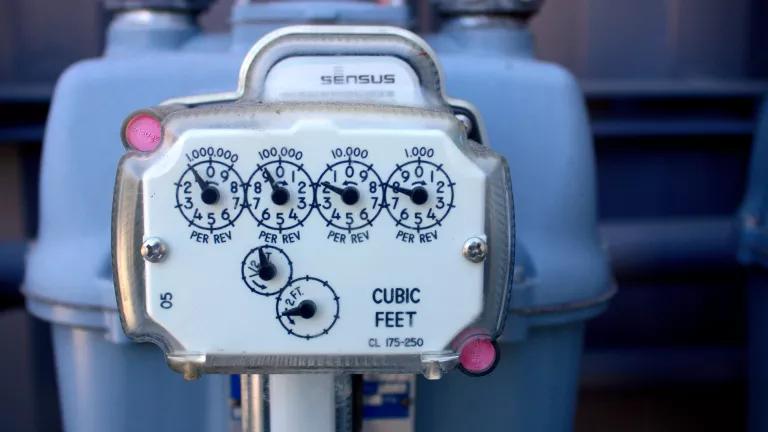New Program Provides Energy Burden Relief for Tenants in LA
The Los Angeles Department of Water and Power, the largest municipal utility in the country, has worked with advocates to develop a comprehensive program that provides benefits to low income tenants and is accessible by affordable housing providers.

This blog was co-authored by Agustin Cabrera, Blanca De La Cruz, Michele Hasson, Kate Heller, and Braxton Bridgers.
The Los Angeles Department of Water and Power (LADWP) Board voted to approve implementation of the Comprehensive Affordable Multifamily Retrofit Program (CAMR) recently. The largest municipal utility in the country has worked with advocates to develop a comprehensive program that provides benefits to low income tenants and is accessible by affordable housing providers.
After years of advocacy and negotiation, Los Angeles finally has a program that delivers much needed benefits to low-income renters and property owners, as well as providing an essential step toward meeting the city’s climate goals. This program would be valuable in any year, but particularly after the effects of Covid-19 have exacerbated burdens faced by low-income renters, this program comes at an especially welcome moment.
This achievement represents more than 5 years of work from a broad coalition of advocates, including the RePower and EEFA LA coalitions and collaborators from SCANPH and LABBC. Up to $92 million will go to the new CAMR program over 5 years, $75 million to incentives, and $17 million to technical assistance. Without their advocacy, earmarked funds most likely would have been folded into status quo programs not specifically designed to serve low-income renters. In addition to CAMR, some of the $100 million investment will expand the Home Energy Improvement Program (HEIP). This existing direct-install program offers residential customers home energy efficiency improvements through various measures and reduces their utility bills at no cost. Thanks to coalition advocacy, HEIP will now include targeted efforts to reach low-income residents in multifamily Affordable Housing by working with property owners to streamline the application process and serve all building tenants. This program also allows the Utility Pre-Craft Trainee (UPCT) program to scale up to achieve the program’s demands and give UPCT’s and unionized contract workers top priority for performing HEIP work.
“The RePower LA Coalition has been fighting for equity and high-quality workforce standards for these necessary programs,” said Agustin Cabrera, Director of the RePower LA coalition. “This is a big victory for low-income Angelenos. These programs are critical for the city to achieve energy equity that centers frontline communities, renters and workers.”
The CAMR program marks an important milestone as it is the first program from LADWP designed specifically to address the needs of multifamily affordable housing. The eligibility guidelines and program design for CAMR ensure that the benefits from clean energy investments will reach the low-income renters in most need. To participate, properties must be 5 or more units, in which the majority of households earn incomes at or below 80% of Area Median Income. Program incentives cover electricity energy savings, gas-to-electric fuel switching, electric infrastructure upgrades, and solar PV. Incentives are structured so that projects that prioritize cost savings for tenants and/or that reduce proportionally more greenhouse gasses receive higher incentives. Furthermore, project contractors must follow "Level Playing Field'' requirements, including prevailing wage, and Skilled & Trained workforce requirements.
Advocacy efforts for CAMR were greatly aided by support from the Mayor’s office and leadership from within LADWP. In particular, Commissioner Susana Reyes and President of the Board Cynthia McClain Hill are both dedicated to racial justice and serving underserved customers in the LADWP service area. Managing a program like CAMR is unprecedented for LADWP, but they recognize the value the program adds.
Before CAMR, many of LADWP’s energy efficiency offerings were inaccessible to low income multifamily housing residents. With CAMR, energy services for this vital group are finally part of LA’s ecosystem of renewable energy programs. Additionally, CAMR is unique among programs tailored to low income multifamily retrofits because it requires prevailing wage standards. Though this win for labor was possible partly because of existing wage standards in the City, it represents a major milestone and precedent for public program design.
Low income multifamily housing has been historically underserved and overlooked in investments for sustainable rental homes. “With the new CAMR program and updated HEIP program, affordable housing providers will be able to receive the technical assistance and incentives needed to reduce operating costs portfolio-wide. Just as important is being able to significantly lower their residents’ energy bills through tenant solar,” said Blanca E. de la Cruz, Sustainable Housing Program Director with the California Housing Partnership.




